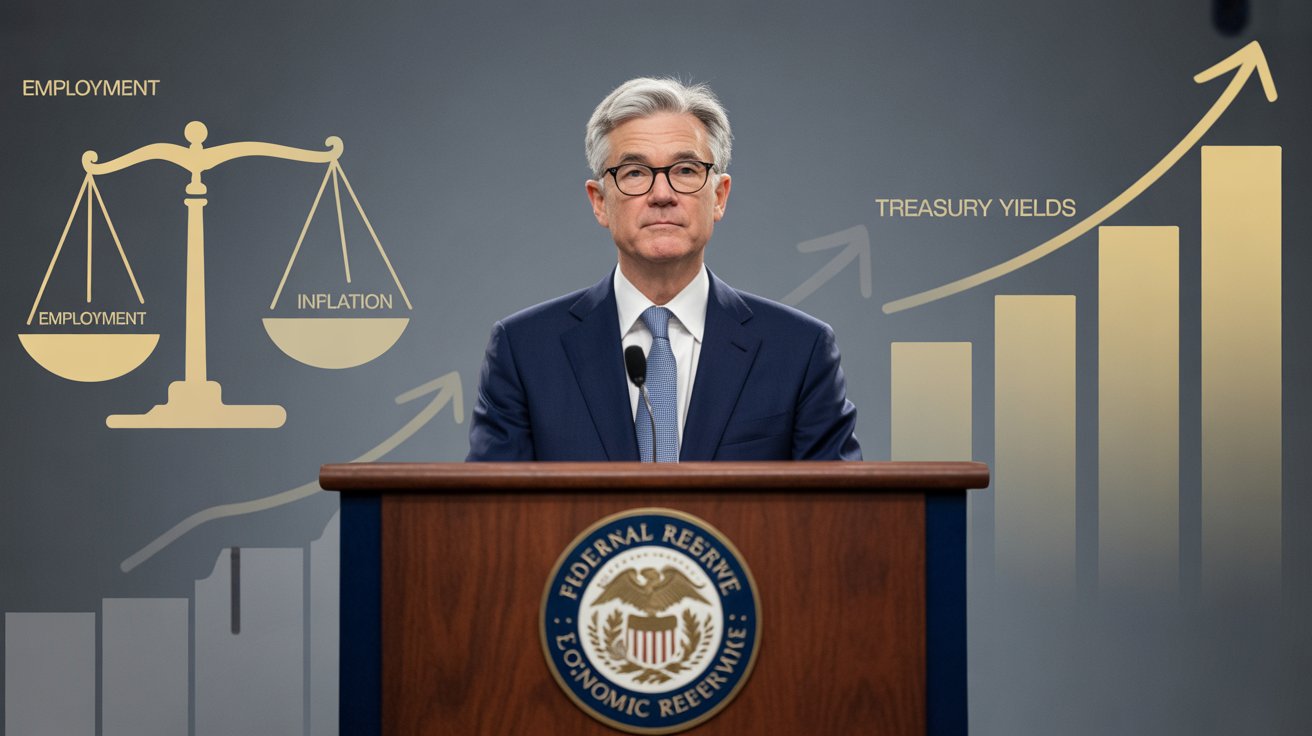Key Points
- First of all, as Federal Reserve policy was thoroughly examined, changing risks were brought to light.
- Jerome Powell then subtly suggested possible interest rate decreases.
- Uncertainty was also stressed, and legislators were seen moving with caution
- Moreover, economic resilience was recognized but downsides were repeatedly noted.
- At last, the need of Fed independence was highlighted as policy changes were discussed.
Federal Reserve Chairman Jerome Powell delicately hinted in his widely followed Jackson Hole speech that near future Powell interest rate reductions could be required. He noted that a high degree of uncertainty combined with changing economic risks was making the work of monetary policymakers progressively more difficult.
Powell underscored the need for measured policy changes by keeping a Fed cautious approach. Therefore, it became vital to strike a balance between inflation control and employment growth targets.
Change in Risk Equilibrium Might Justify Correction
He admitted that prevailing strict financial conditions might later call for an adjustment.olicy recalibration, it was stated, may result from both the baseline view and a changing balance of risks. Highlighted as contributing to the economic uncertainty were risks linked with tax, trade, and immigration regulations. These broad developments were thought to be affecting job chances as well as inflation.
Rising Issues and Economic Outlook
It was noted that though the job market stayed robust and economic resilience remained, downside risks were still growing. Powell observed that tariffs were adding to the risk of stagflation, a situation in which growth slows and inflation might increase. Such hazards were being given a great difficulty for decision-makers, particularly since the Fed’s base interest rate had already been cut relative to the prior year.
Proceeding Carefully
With tight policy already in effect, conditions enabled the Fed Chair to advance slowly when assessing possible policy adjustments. He emphasized how important the Fed’s cautious approach was at this juncture. Before making any definitive decision, the Federal Open Market Committee was meant to consider incoming information. Although the Fed Chair avoided explicitly calling for quick action, markets reacted dramatically—Treasury yields rose and stocks surged.
Political Pressure and Market Reaction
Equity markets recovered and bond yields fell in response to Powell’s cautious comments. Investors were observed interpreting his speech as a signal that a rate cut might be on the horizon. Simultaneously, political pressure from the White House was being exerted, as demands for lower rates had been said many times. Powell underlined the autonomy of the Federal Reserve, nevertheless, stating that decisions would be based on data and free from political influence.
Significance of Fed Independence
Powell pointed out that political demands would not influence monetary policy decisions. He reiterated that the Federal Reserve’s promise to datadriven analysis would remain unbroken. FOMC members would make their decisions just on economic circumstances and the balance of risks, it was underlined. Credibility and long-term economic stability depend on this independence, which was portrayed.
Inflation Dangers and Tariffs
Described as a source of uncertainty, tariffs cause inflationary risks and make policy choices more difficult. Though tariffs could result in brief price changes, Powell noted that the net effect was still unknown. Policymakers knew that supply chains and distribution systems would need time to change, therefore forecast long-term inflation results would be challenging. He underlined that tariff changes could slow the adjustment process.
Framework for Policy and Lessons from Inflation
The ongoing five-year policy review of the Federal Reserve was also covered. Powell accepted that the flexible average inflation targeting plan started in 2020 had proven inadequate when inflation soared unexpectedly. He acknowledged that the agonizing memory of high inflation had underlined the need of stability. Authorities reiterated their commitment to the 2% inflation goal and stressed the need of credibility.
Conclusion
At Jackson Hole, Jerome Powell’s words carried a cautious but meaningful signal that the Powell interest rate decreases might soon be a needed tool in addressing changing economic concerns. Emphasizing a calculated strategy kept labor market goals and price stability in line.
Powell asserted that choices would remain datadriven and free from political influence even if markets responded positively. Given global trade uncertainty, inflationary dangers, and lessons from past policy successes, the credibility of the Federal Reserve now rests on wise navigation of the route forward.
